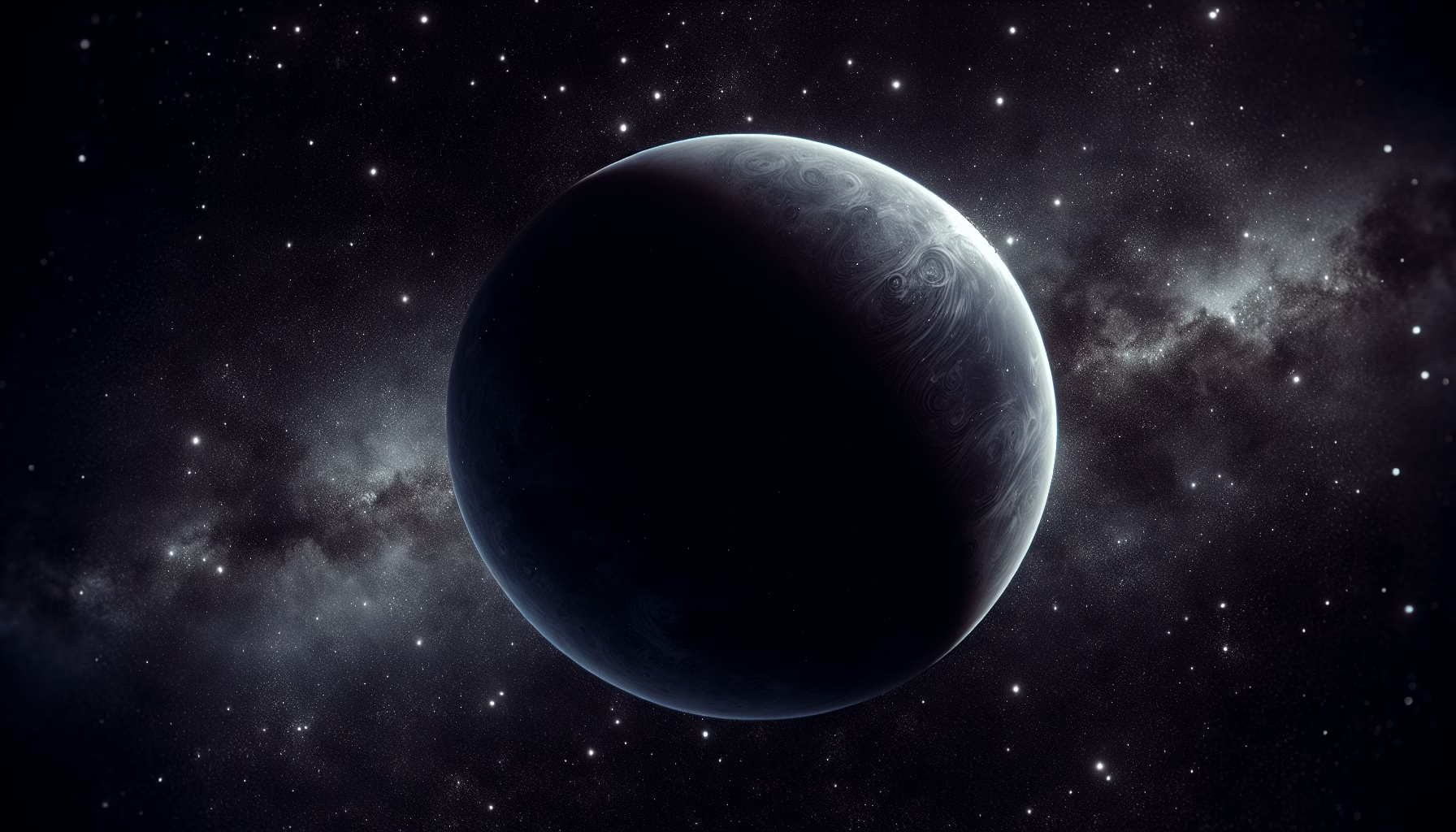Have you ever wondered if there’s something out there beyond the edges of our solar system, swirling silently in the cosmic abyss waiting to be discovered? The search for Planet Nine captivates not only scientists but anyone intrigued by the mysteries of space, as we strive to piece together the unknown elements of our celestial neighborhood.

Table of Contents
The Allure of Planet Nine: Why It Matters
The prospect of an additional planet in our solar system reshapes our understanding of celestial mechanics, planetary science, and the history of our solar system. Unlike Pluto, whose reclassification to dwarf planet caused much debate, Planet Nine is theorized to be a massive object with the potential to redefine the boundaries of our solar system.
The Hypothetical Discovery
Planet Nine remains theoretical, suggested by mathematical modeling and computer simulations. The idea is that a ninth planet exists far beyond Neptune, influencing the orbits of distant trans-Neptunian objects (TNOs) through gravitational forces. This gravitational influence offers indirect evidence of Planet Nine’s existence, leading astronomers on an exciting hunt.
The Implications for Modern Astronomy
The search for Planet Nine echoes many of the challenges and triumphs of earlier discoveries in astronomy. Finding this planetary body would revise the solar system’s map and offer insights into planetary formation and migration theories. More broadly, it could teach us about the architecture of planetary systems outside our own, drawing comparisons and contrasts with extrasolar systems.
Historical Context and the Planet Nine Hypothesis
To understand why the search for this elusive planet has captured such interest, it’s essential to look at the origins of the idea and the evidence supporting it. The concept of an undiscovered planet isn’t new, yet modern technology has refined search techniques and solidified the hypothesis around Planet Nine.
From Uranus to the Kuiper Belt
Astronomy has a rich history of discovering new planets through observation and theory. The discovery of Uranus in 1781 marked the first recognition of a planet not visible to the naked eye, compelling scientists to ponder what else might lie undiscovered. Following Uranus came Neptune in 1846, whose existence was predicted based on its gravitational influence on Uranus. In a similar vein, Planet Nine’s existence is hinted at by its effect on distant objects in the Kuiper Belt.
The Search for Trans-Neptunian Objects
The focus on TNOs began in the late 20th century, renewing interest in the possibility of undetected planetary bodies beyond Neptune. These objects belong to a region of space steep with icy bodies and debris – the Kuiper Belt – and their unusual orbital patterns are a critical clue in the search for Planet Nine. The unusual orbits of these objects suggest the gravitational pull of a massive, unseen planet.

The Evidence: Orbital Anomalies and Mathematical Predictions
Substantial evidence underscores the potential existence of Planet Nine, based on the behavior of TNOs at the solar system’s fringe. Their clustered and tilted orbits can’t be fully explained by currently known planets, suggesting the hand of a lurking celestial body.
Orbital Patterns as Cosmic Breadcrumbs
The current theory points to six key TNOs with clustered orbits that align in a way highly unlikely to be random without external influence. Calculations suggest such alignment could be the result of Planet Nine’s gravitational force, creating a shepherding effect.
Theoretical Models and Simulations
Computer models bolster the hypothesis with simulations that recreate known orbital characteristics, predicting a planet approximately 5 to 10 times Earth’s mass orbiting at a distance 400 to 800 AU (astronomical units) from the Sun. Such a model not only accounts for the clustered orbits but also aligns with our knowledge of planetary formation and migration.
The Compelling Search: Tools and Techniques
Searching for a planet at such tremendous distances from the Sun requires innovative techniques and cutting-edge technology. Astronomers employ a combination of telescope observations, data analysis, and mathematical modeling to prune down the otherwise staggering volume of potential search locations.
Ground-Based Observatories and Telescopes
Observational efforts rely heavily on powerful ground-based telescopes, such as those at Mauna Kea in Hawaii or Cerro Tololo in Chile. These facilities equipped with advanced imaging and survey capabilities grant researchers the clearest possible views of distant celestial objects.
Harnessing Data and Algorithms
State-of-the-art algorithms play a pivotal role in enhancing the search, analyzing enormous datasets from surveys to detect faint objects and subtle movements in the sky. Digital advancements and big data allow for the systematic identification of relevant anomalies against the backdrop of the vast, starry field.
Collaborative Efforts and Broader Networks
International collaborations bolster the Planet Nine hunt by sharing resources and insights, as diverse teams combine expertise to piece together clues. These efforts reflect a global scientific community unified by the shared goal of unveiling cosmic mysteries.

Skepticism and Alternative Theories
As with any scientific endeavor, the search for Planet Nine isn’t devoid of skepticism and alternative considerations. Disagreements persist among the scientific community, driving a healthy debate based on empirical evaluation and critical thinking.
Alternative Explanations for TNO Orbits
While the prevailing theory supports a massive trans-Neptunian planet, some astronomers propose other explanations for the observed phenomena, including the influence of clustered smaller objects or the effects of a stellar flyby. In these models, collective gravitational forces or past cosmic events could shape the current state of distant orbits.
The Challenges of Outer Solar System Exploration
Doubts regarding Planet Nine’s existence often stem from the inherent challenges of studying the solar system’s outer regions. The immense distances, faint signals, and lengthy orbital periods complicate direct observation, mindful that failures to find concrete evidence could stem from the limitations of our current technology and understanding.
Broader Implications for Solar System Science
Discovering Planet Nine would create ripples across solar system science, prompting revisions to long-standing theories and enhancing our grasp of planetary system dynamics.
Impacts on Planetary System Formation
A new addition to our planetary lineup would enrich models of solar system formation, particularly theories concerning the genesis and migration of planets. A planet nine might represent a missing piece in the solar system’s evolutionary timeline, opening pathways to investigate how other planetary systems might mirror our own.
Expanding Cosmological Perspectives
Planet Nine’s detection would transition from theory to confirmation, providing a broader cosmological perspective and potentially guiding future searches in other stellar systems. This endeavor fosters methodologies translatable to exoplanet discovery, inciting questions regarding the uniqueness of the solar system’s arrangement.

The Road Ahead for Planet Nine Research
Undoubtedly, the pursuit of Planet Nine challenges the boundaries of human curiosity and innovation, inviting future generations of astronomers to push the envelope even further.
Technological Innovations and Prospective Missions
Anticipated advances in technology promise to refine searches, with future telescopes featuring enhanced sensitivity and resolution. Meanwhile, the concept of dedicated space missions to unravel Planet Nine’s secrets remains a tantalizing prospect, offering targeted, on-site investigations.
Inspiring the Next Generation of Astronomers
The mystery of Planet Nine inspires curiosity in scientists and the public alike, fostering academic interest and nurturing the education of budding astronomers. As telescope lenses sharpen, so do the minds of those eager to unravel the universe’s mysteries, paving the way for discoveries that could shape humanity’s knowledge of the cosmos.
Conclusion: Embracing the Cosmic Puzzle
The search for Planet Nine is exactly the type of scientific quest that galvanizes collective curiosity, inspiring us to look beyond. By understanding more about our solar system, we not only piece together the puzzle of our own environment but also learn how it fits within the broader context of the universe.
Though the outcome remains uncertain, the journey toward discovery is in itself a triumph of human spirit and ingenuity. Encouraging further exploration invites each of us to not only ponder over distant planets but to critically engage with the unknown in our quest for knowledge. As we inch closer to unlocking the secrets of Planet Nine, one thing becomes clear: the allure of the unknown continues to captivate and beckon explorers, scientists, and dreamers alike.
In pondering the mysteries beyond, what are the challenges you face, or is there something you yearn to know about our cosmic environment? Share your thoughts and dive deeper into the universe’s enigmas through related journeys.


